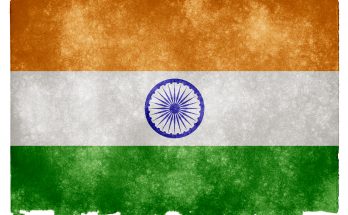Japan’s Ministry of Defense has submitted a budget request of ¥8.54 trillion ($59.76 billion) for fiscal year 2025 (FY25). The requested total marks a 7.5 percent increase over the current year topline figure of ¥7.95 trillion ($55.6 billion) and 10.6 percent higher than the initial defense budget submission for FY24 (¥7.72 trillion).
The latest spending request – which fits with Japan’s ongoing military budget expansion – would push the country’s defense budget to up above 1.4 percent of GDP if approved by the Diet (parliament). The uptick in funding also ties in with the Defense Buildup Program (DBP) launched by the government of Prime Minister Fumio Kishida in December 2022, which aims to spend ¥43 trillion ($300 billion) from 2023 through 2027.
The goal outlined at the time by the government is to bring defense spending topline levels up to 2 percent of GDP from the longstanding informal cap of 1 percent or less of annual GDP earmarked for the military budget.
That proposed increase represents a seismic shift in Japan’s post-Second World War – and particularly its post-Cold War – strategic thinking. And whether the 2 percent of GDP target is substantive in terms of buying power and improved military capability or merely symbolic for the sake of mollifying Tokyo’s security partners, the goal nonetheless indicates a sharp shift in Japan’s approach to national defense.
With two years remaining post-2025 to hit the 2 percent mark it should be expected that the FY25 request will be approved by the Ministry of Finance (MoF) as-is, or possibly – as occurred this fiscal year – even increased slightly.
Under normal budgetary practice the MoF will reduce the MoD’s initial request slightly before handing an edited version back to the Cabinet to send to the Diet for approval.
But this year that appears unlikely considering the government’s push to meet the 2 percent-GDP spending metric and the harsher reality is that the Japanese yen has plummeted to its lowest value against the dollar since 1986. That declining value eats into the Japanese defense budgets buying power as many of its procurements involve U.S.-designed platforms or key equipment parts for Japanese-produced systems which are sourced from the U.S. and other countries. Those sales are conducted in U.S. dollars and other foreign currencies such as the Euro which continue to gain in value versus the yen.
Thus, a weakened currency undercuts the scale of what Japan can purchase and negating to a degree the upticks in defense funding. When factoring normal defense inflation rises with increased global demand for advanced weaponry and munitions the near-term picture for Japan’s defense modernization ambitions becomes cloudy.
Another issue for Japan is its tremendous debt, which is well over twice the size of its national economy. By the end of 2023 the debt stood at ¥1,286 trillion ($8.6 trillion) and represented around 263 percent of GDP. Concurrently, Tokyo must spend more and more annually to service this debt. For 2023 the Ministry of Finance earmarked an initial ¥25.25 trillion ($178 billion) for debt servicing during the fiscal year, which rose to ¥27 trillion ($190 billion) – or 21 percent of total government expenditure – this year.
While much of Japan’s debt is held domestically – primarily by the Bank of Japan – and the “true costs” of debt servicing are lower than they appear to the naked eye, Tokyo must nonetheless balance between the push for higher defense expenditures and the reality that to pay for them higher taxes will become necessary.
In the meantime, the accelerated push to expand Japan’s defense capabilities continues.
One of the foremost priorities in Japan’s military modernization effort is the acquisition and deployment of counter-strike capabilities as a deterrent mechanism. The ability to hit back at an enemy from a great distance following a first-strike attack is considered crucial by Tokyo.
A major step forward to meet this requirement occurred back on January 18 when Japan’s MoD inked a contract worth about ¥254 billion ($1.79 billion) with the U.S. for up to 400 U.S.-made long-range Tomahawk cruise missiles. The Tomahawk missile has a strike range of around 1,600km (1,000 miles), therefore providing counterstrike capability against Japan’s two strongest threats: China and North Korea.
In parallel with the Tomahawk procurement Japan is earmarking funding for the improvement and acquisition of the Type-12 surface-to-ship guided missile, which will have its range extended from over 100km (62 miles) to 1,000km (621 miles) and be delivered by 2025. The Type 12 was indigenously developed by Mitsubishi Heavy Industries and is Japan’s most capable land-based anti-ship missile system.
Other key areas of investment outlined in Japan’s Defense Buildup Program include integrated air and missile defense, autonomous defense capabilities (such as unmanned aerial systems), cross-domain operational capabilities (specifically Cyber, Space, Electromagnetic and the traditional Air-Sea-Land domains), command and control (C2) and intelligence-related systems and functions, mobile deployment capabilities, and sustainability and resilience.
For Japan, with a shrinking population and military recruitment difficulties, the turn to autonomous systems as a substitute for manned systems is a necessity.
Under the Defense Buildup Program Japan will gradually phase out its attack and observation helicopter fleets in favor of unmanned platforms by 2027. This will likely involve retirement of the Ground Self-Defense Force’s (GSDFs) fleets of AH-64D Apache and AH-1S Cobra attack helicopters, plus the OH-1 Ninja observation helicopters indigenously produced by Kawasaki.
Expansion of capabilities in the space and cyberspace domains naturally requires greater investment, with the FY25 defense budget proposal earmarking ¥227 billion ($1.6 billion) for the former and ¥265 billion ($1.87 billion) on the latter. The need to recruit and retain personnel for specialized roles in critical technologies also means the MoD must compete with the marketplace and therefore budget higher for salaries and signing/retention bonuses going forward if it wants to attract such employees.
Of note in the space domain is the development and operationalization of a new satellite constellation. This will be utilized for target detection and tracking capabilities tied to Japan’s counterstrike (standoff) defense. The FY25 funding request for this element comes to ¥323 billion ($2.24 billion).
Other noteworthy initiatives outlined in the FY25 defense budget proposal include manufacturing capability for hypersonic guided missiles, three Improved Mogami-class (FFM) naval frigates, and the ongoing development of the trilateral Global Combat Air Program (GCAP).
While Japan will continue to confront economic and fiscal headwinds on its road to defense modernization, one thing is without question: the government is intent on moving forward with its military buildup.
China continues to improve its military capabilities and utilize gray zone tactics to coerce and exert influence over its neighboring region. Meanwhile, North Korea’s nuclear ambitions and unpredictable behavior, combined with an increasingly polarized global environment further splintered by the Russian invasion of Ukraine, dictates that Japan’s own defense and deterrent capabilities be rapidly and boldly upgraded.
Because of this reality the idea of a stronger Japan Self-Defense Force and a tenacious defense posture no longer represent a political taboo in Japan. And this, in turn, ensures that the government’s willpower to reach the 2 percent of GDP spending target remains unwavering.
Dan Darling is Forecast International’s director of military and defense markets. In this role, Dan oversees a team of analysts tasked with covering everything from budgeting to weapons systems to defense electronics and military aerospace. Additionally, for over 17 years Dan has, at various times, authored the International Military Markets reports for Europe, Eurasia, the Middle East and the Asia-Pacific region.
Dan's work has been cited in Defense News, Real Clear Defense, Asian Military Review, Al Jazeera, and Financial Express, among others, and he has also contributed commentary to The Diplomat, The National Interest and World Politics Review. He has been quoted in Arabian Business, the Financial Times, Flight International, The New York Times, Bloomberg and National Defense Magazine.
In addition, Dan has made guest appearances on the online radio show Midrats and on The Media Line, as well as The Red Line Podcast, plus media appearances on France 24 and World Is One News (WION).




